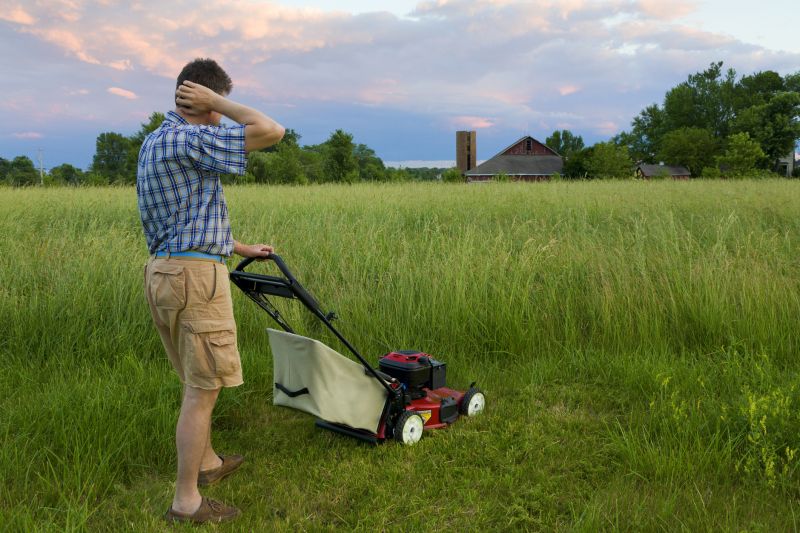Leading Choices For Farm Mowings To Enhance Workflow
Explore top products engineered to optimize your mowing routines and improve overall farm management.
 Farm mowing involves managing large areas of grass, hay, or forage crops, requiring reliable and efficient equipment to handle extensive land. The right products can significantly streamline the mowing process, improve safety, and ensure a clean, even cut. From traditional manual tools to advanced machinery, there is a wide variety of options tailored to different farm sizes and operational needs. Selecting the appropriate equipment depends on factors such as terrain, crop type, and the scale of the operation.
Farm mowing involves managing large areas of grass, hay, or forage crops, requiring reliable and efficient equipment to handle extensive land. The right products can significantly streamline the mowing process, improve safety, and ensure a clean, even cut. From traditional manual tools to advanced machinery, there is a wide variety of options tailored to different farm sizes and operational needs. Selecting the appropriate equipment depends on factors such as terrain, crop type, and the scale of the operation.
Top Overall Option
Universal Farm Mowing Machine
A versatile and adaptable mowing machine designed to handle a variety of terrains and crop types, featuring adjustable cutting heights, durable blades, and easy attachment compatibility. It offers reliable performance for different farm sizes and can be customized with various accessories to meet specific mowing needs.
Types of Products For Farm Mowings
Pull-Behind Mowers
Towed behind tractors or ATVs, these mowers are suitable for large fields and offer extensive cutting widths for efficient coverage.
Self-Propelled Mowers
Equipped with their own power source, these mowers provide greater maneuverability and ease of use for varied terrain.
Rotary Cutters
Designed for heavy-duty mowing, rotary cutters excel at managing thick grass, brush, and weeds on farms.
Flail Mowers
Featuring rotating blades that chop vegetation into fine pieces, ideal for maintaining pastures and clearing overgrown areas.
Disc Mowers
Utilize spinning discs with blades to cut grass efficiently, often used in hay production and large pasture management.
Pull-Type Hay Balers
Combine mower and baler functions to streamline hay harvesting in a single pass across large fields.
String Trimmers
Handheld tools suitable for trimming edges and hard-to-reach areas around farm equipment and structures.
Brush Cutters
Heavy-duty tools for clearing dense brush and overgrown patches in farm boundaries and pathways.
Hydraulic Attachments
Versatile tools that connect to tractors, including various mowing blades and cutters for different applications.
Hydrostatic Drive Mowers
Mowers with variable speed control for smoother operation and better handling on uneven terrain.
Riding Mowers
Designed for large lawns and pastures, offering comfort and efficiency for operators managing extensive areas.
Tow-Behind Brush Hogs
Heavy-duty mowers designed to attach to tractors for clearing large overgrown areas quickly.
Multi-Functional Attachments
Equipment that can be swapped out or combined for mowing, raking, and other land management tasks.
Popular Choices
Widely used for their efficiency in covering large fields with minimal effort, suitable for various terrains.
Popular for their maneuverability and ease of operation, especially in uneven or hilly areas.
Favored for managing thick grass and brush, providing robust cutting power for demanding farm conditions.
Chosen for their ability to finely chop vegetation, ideal for pasture maintenance and overgrowth control.
Common in hay production, offering efficient cutting with a straightforward design.
Versatile tools that enhance tractor capabilities, allowing for multiple mowing and land management functions.
Ideal for large, flat areas where operator comfort and consistent mowing are priorities.
Essential for detailed trimming around farm structures and edges, complementing larger equipment.
Effective for clearing dense overgrowth in farm boundaries and access roads.
Popular for their flexibility, allowing farmers to perform multiple land management tasks with one machine.
Farmers often utilize specialized mowing equipment designed to handle tough, fibrous plants while minimizing damage to the land. Proper maintenance and selection of compatible attachments can extend equipment lifespan and optimize performance. Additionally, safety features and ease of operation are essential considerations to prevent accidents and reduce operator fatigue.
Innovations in farm mowing technology include hydraulic systems, adjustable cutting heights, and multi-functional attachments that can serve multiple purposes. Investing in quality products can contribute to more efficient land management, better crop yields, and overall operational productivity. Whether for large-scale hay production or pasture maintenance, choosing the right tools is crucial for achieving desired results without unnecessary hassle.
Key Buying Considerations
- Assess the size of your farm and the total area to be mowed to determine the appropriate equipment capacity.
- Consider the terrain and ground conditions, as some mowers are better suited for uneven or hilly land.
- Evaluate the types of vegetation or crops being managed to select the right cutting mechanism and blade type.
- Check compatibility with existing tractors or machinery to ensure seamless attachment and operation.
- Prioritize safety features such as shields, emergency stops, and operator protection mechanisms.
- Think about ease of maintenance and availability of replacement parts for long-term reliability.
- Review operator comfort and control features, especially if equipment will be used frequently.
- Determine the power source—manual, gas-powered, or electric—based on farm infrastructure and preferences.
- Analyze the versatility of attachments or multi-functionality for maximizing equipment utility.
- Consider storage requirements and whether the equipment is foldable or compact for easy storage.
- Review user feedback and operational reviews to gauge real-world performance and durability.
- Factor in budget constraints while balancing quality and features to meet your specific needs.
- Look into warranty and customer support options offered by manufacturers or suppliers.
- Evaluate environmental and operational noise levels if applicable, especially for frequent use.
This content contains affiliate links. We may earn a commission at no additional cost to you if you make a purchase through these links.
